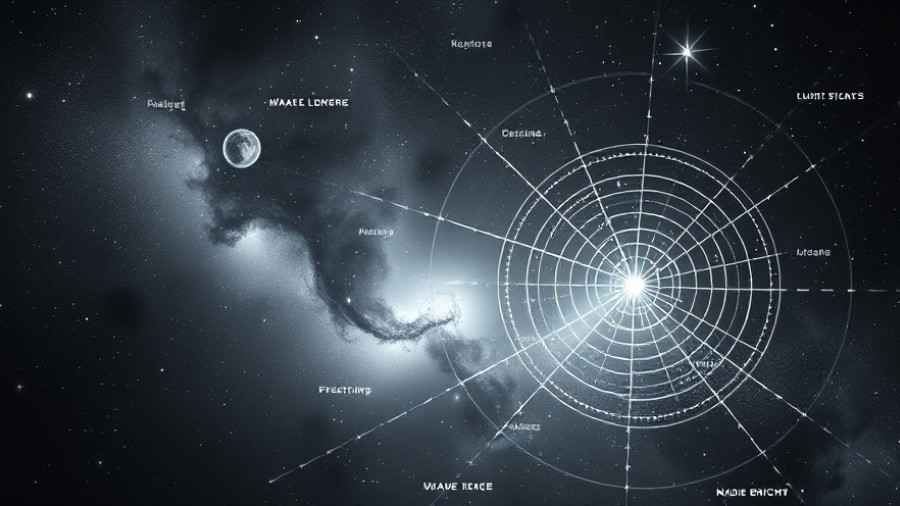
Exploring the Universe: Are We Missing the Signs of Alien Life?
Every day, scientists across the globe ponder the profound question: Are we alone in the universe? Despite decades of searching, the elusive evidence of extraterrestrial life remains just that—elusive. However, new theories suggest we might be approaching a breakthrough in our quest for understanding potential alien civilizations. A recent focus on radio-bright galaxies has emerged, changing the way scientists approach the search for extraterrestrial intelligence (ETI).
Shifting the Paradigm: From Searching for Signals to Analyzing Galaxies
For over a century, humanity's search for extraterrestrial life has evolved dramatically—initially captivated by the illusion of Martian canals and now scrutinizing the vastness of the universe for varied signals. However, Brian Lacki, a researcher with the Breakthrough Listen Initiative, offers a new lens through which to view this search. Instead of zeroing in on individual alien civilizations, he posits that we should examine entire galaxies that emit strong radio signals.
Lacki’s recent studies illuminate the concept that these radio emissions might not be accidental. He theorizes that galaxies with high radio emissions could harbor multiple advanced civilizations—each broadcasting their presence indistinguishably within a cosmic noise. This revelation invites us to reconsider our detection methods, suggesting that we might have overlooked these signals, mistaking them for mere cosmic background noise.
The Fermi Paradox: Why Haven't We Found Extraterrestrial Life?
The Fermi Paradox, proposed by physicist Enrico Fermi in the 1950s, questions why we haven't found evidence of alien civilizations despite the existence of billions of potentially habitable planets. It challenges researchers to reconsider the methods and approaches used in their search. Lacki's arguments suggest the universe could be teeming with intelligent life, prompting a reexamination of how we perceive galactic signals. Some astronomers theorize that once a civilization reaches a significant technological threshold, it may proliferate throughout its galaxy, leading to numerous detectable signals.
The Role of Methyl Halides: A New Search Strategy
In the quest for extraterrestrial life signs, there's been a growing interest in locating biological markers—specifically chemical compounds produced by living organisms. Researchers have recently focused on methyl halides, which can indicate the presence of microbial life. The discovery of methyl halides on a range of planets could imply that microbial life is common and paving the way for complex life.
Improving our detection strategies is imperative as these discoveries can lead to a quantum leap in understanding life's potential across the cosmos. Instead of predominantly searching for carbon dioxide and methane, identifying methyl halides could reveal a truer picture of life beyond Earth.
Separating Signal from Noise: Identifying Technosignatures
Lacki emphasizes the immense challenge posed by differentiating artificial signals from natural cosmic emissions. As he notes, “the trouble is that you can’t tell whether that emission is natural or artificial just from knowing how bright it is in the radio band.” While researchers engage in rigorous examination to identify and categorize these emissions, effectively filtering out natural sources like supermassive black holes remains a significant hurdle.
Carrying out this extensive filtering process requires advanced technologies and innovative methodologies to increase the odds of detecting potential weisen signals. Every new analysis could inch us closer to resolving the Fermi Paradox.
Looking Ahead: Innovations and Alternatives in Detection
While the focus on radio-bright galaxies offers a promising avenue, it is only part of a broader array of potential methods for detecting alien signals. Future explorations may include searching for iridescent signatures from hypothetical constructs, like the Dyson sphere, or even evidence of gamma-ray emissions from advanced technologies. The idea is to interpret the universe not as silent, but as a cacophony of possible communications just waiting to be decoded.
This diversified approach promises a richer understanding of the universe's fabric, cultivating hope that one day we may not just listen, but also hear.
The Key Takeaway: A Unified Quest for Understanding
The exciting exploration of radio-bright galaxies represents a significant paradigm shift in how we perceive the cosmos and our place within it. It invites scientists and the curious public alike to ponder the prospects of life outside our planet. As we enhance our observational techniques and refine our understanding of the universe, we pave the way for potentially rewriting our understanding of existence itself.
Your thoughts or questions on these exciting developments? Have a story to share or want to contact us for more details? Drop us an email at team@kansascitythrive.com.
 Add Row
Add Row  Add
Add 





Write A Comment